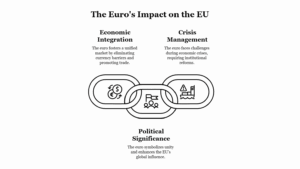The concept of “development as freedom” is primarily associated with the economist and philosopher Amartya Sen, who argues that true development cannot be measured merely by economic growth or wealth accumulation but must focus on the expansion of individuals’ freedoms and capabilities. Sen’s approach redefines development by emphasizing human well-being, social justice, and empowerment rather than just material wealth.
Key Conceptual Foundations:
Amartya Sen’s idea of “development as freedom” is grounded in the belief that development should aim at enhancing people’s abilities to live the kind of life they have reason to value. According to Sen, development involves more than just the increase in GDP or per capita income. It involves the removal of various forms of “unfreedoms” that hinder individuals from achieving their full potential. These unfreedoms can include:
- Poverty and Economic Deprivation: Lack of access to basic resources like food, healthcare, education, and housing.
- Political Oppression: Restrictions on freedom of speech, assembly, and the ability to participate in political processes.
- Social Discrimination: Exclusion based on caste, gender, race, or other factors that deny individuals the opportunity to thrive.
Key Elements of Development as Freedom:
- Economic Opportunities: Sen argues that development should create opportunities for individuals to earn a living, access education, and secure good health. Economic freedom is central to individual autonomy and decision-making. Poverty reduction is thus seen as an essential component of true development.
- Political Freedoms: A democratic system, where people have the right to participate in political decisions and have the freedom to express their views, is essential to development. Political freedom enables individuals to influence policy and hold governments accountable.
- Social Freedoms: Social and cultural freedoms, including freedom from discrimination, access to education, and gender equality, are vital for development. Empowering marginalized groups and ensuring their participation in society is central to Sen’s concept of development.
- Public Policy and Capability Expansion: Sen advocates for public policies that enhance people’s capabilities, enabling them to live healthier, more fulfilling lives. These include education, healthcare, social security, and creating an inclusive economic environment.
Development as Freedom vs. Traditional Economic Growth:
Traditional measures of development, such as GDP growth, focus on economic indicators like income and consumption levels. However, Sen’s model broadens the scope by emphasizing individual freedom and capability expansion. The central idea is that people’s ability to live a life they have reason to value should be the ultimate measure of development, not just their material wealth.
Real-World Application:
In practice, Sen’s concept has implications for policy-making. Governments and international organizations focusing on “development as freedom” would prioritize:
- Health and Education: Universal access to quality healthcare and education is crucial to improving individual capabilities.
- Democracy and Governance: Strengthening democratic institutions and ensuring political freedom are central to enabling individuals to shape their lives.
- Social Justice and Equality: Policies must aim to reduce inequalities and provide equal opportunities for all, regardless of gender, caste, or ethnicity.
Conclusion:
“Development as freedom” offers a holistic view of development, emphasizing human agency and the expansion of opportunities rather than just material wealth. It highlights the importance of freedoms in achieving meaningful development and serves as a powerful framework for analyzing policy and progress in any society. In India, this framework can be used to assess not just economic growth, but also social inclusion, political participation, and the well-being of marginalized groups, contributing to a more comprehensive and equitable vision of development.







Leave a Reply